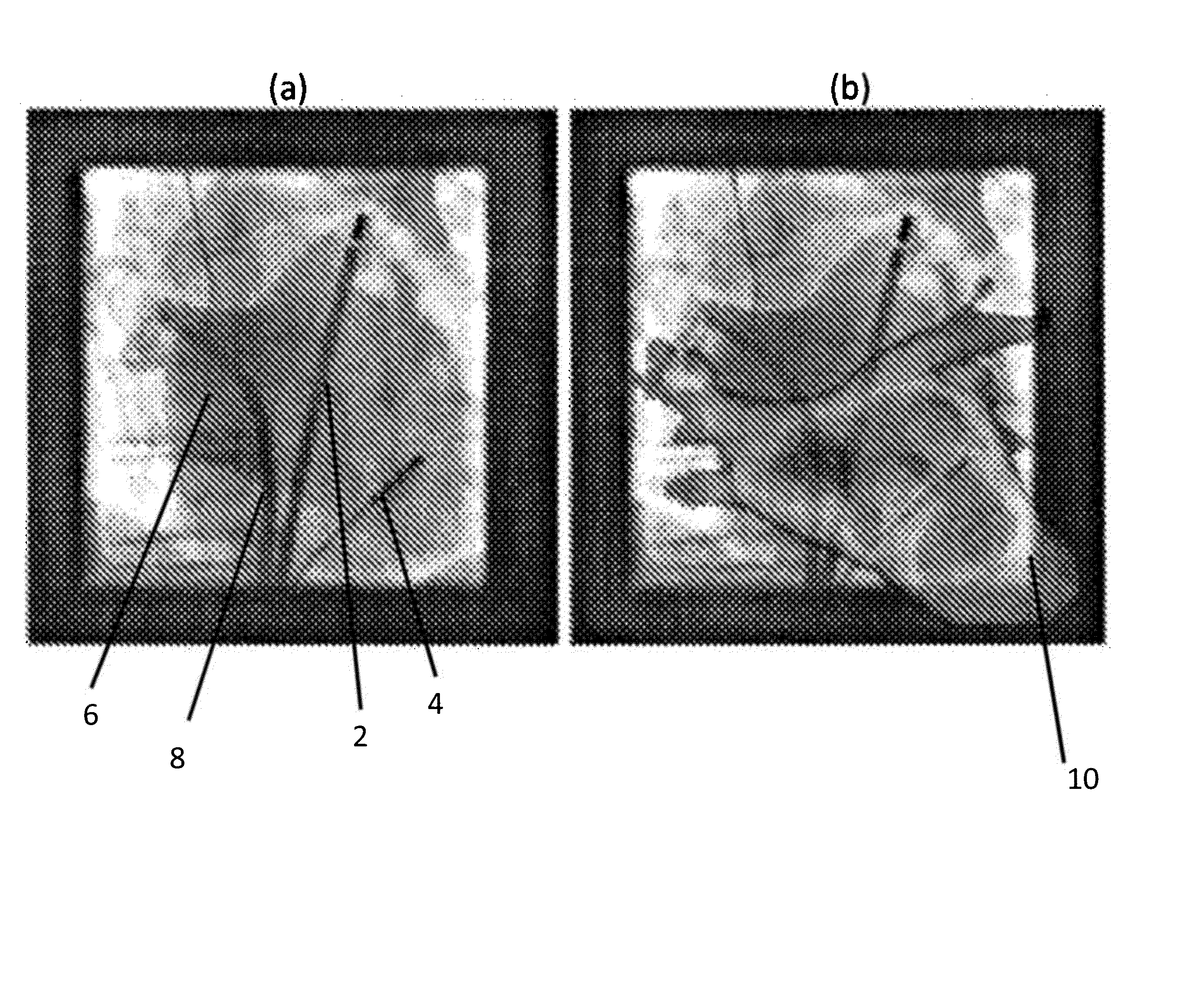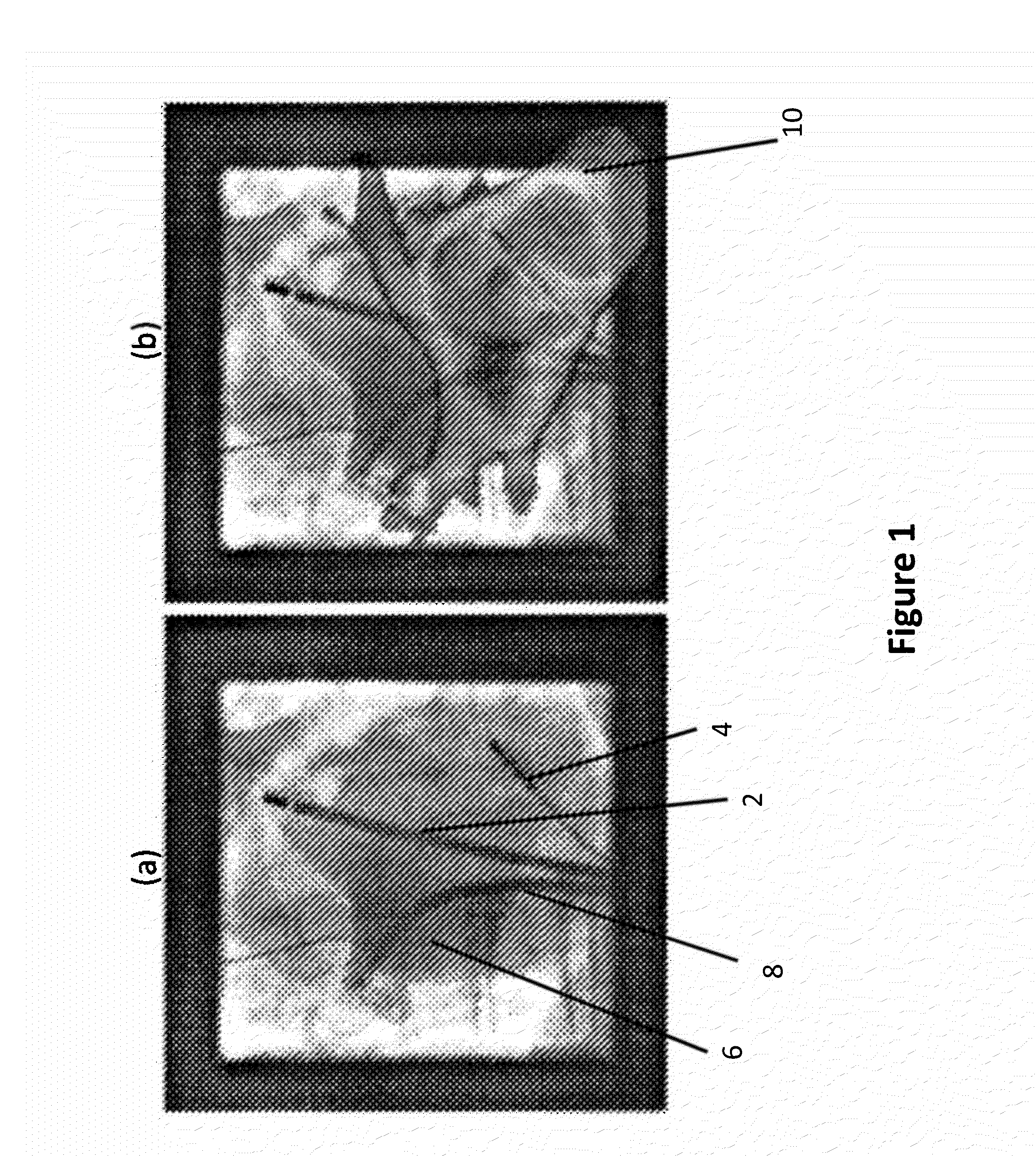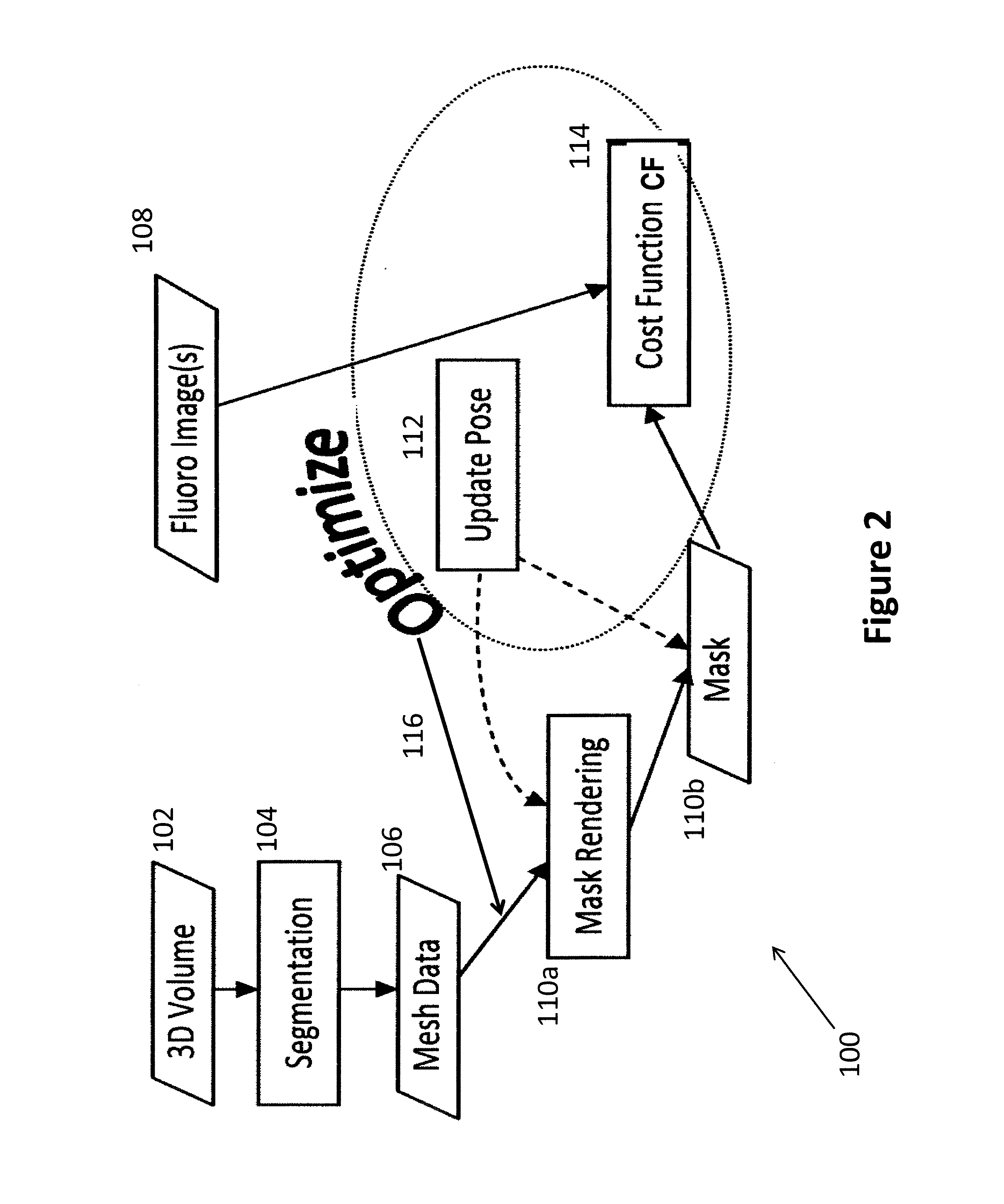2d/3d image registration method
a technology of image registration and 3d, applied in the field of image processing, can solve the problems of difficult fluorometric data, automatic registration of the heart or other structures of the body, and difficulty in registering the different images, so as to achieve the effect of reducing the image dissimilarity metri
- Summary
- Abstract
- Description
- Claims
- Application Information
AI Technical Summary
Benefits of technology
Problems solved by technology
Method used
Image
Examples
Embodiment Construction
[0025]FIG. 2 is a schematic view of a method 100 carried out in accordance with an embodiment of the present invention. Generally, volumetric imaging data of the patient and, more particularly, of the anatomical region of interest (for example, the heart) is acquired (Step 102). Normally, this 3D data is acquired prior to the medical procedure to be performed and, as noted above, the data may be acquired using CT or MR imaging. As an alternative, the data may be obtained from a 3D model of the anatomical region of interest. The method 100 performs automatic or manual segmentation of the 3D volume (Step 104) and obtains a 3D mesh from the pre-acquired 3D volume (Step 106). A 3D mesh is a 3D object representation consisting of a collection of vertices and polygons that define the shape of an object in 3D. This 3D mesh is then used as a basis for registration with real-time fluoro data, which is acquired during the medical procedure (Step 108).
[0026]Specifically, the method 100 compute...
PUM
 Login to View More
Login to View More Abstract
Description
Claims
Application Information
 Login to View More
Login to View More - R&D
- Intellectual Property
- Life Sciences
- Materials
- Tech Scout
- Unparalleled Data Quality
- Higher Quality Content
- 60% Fewer Hallucinations
Browse by: Latest US Patents, China's latest patents, Technical Efficacy Thesaurus, Application Domain, Technology Topic, Popular Technical Reports.
© 2025 PatSnap. All rights reserved.Legal|Privacy policy|Modern Slavery Act Transparency Statement|Sitemap|About US| Contact US: help@patsnap.com



